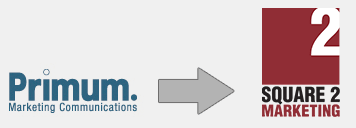

Please enter your email to continue reading our whitepaper: How To Use Your Inbound Marketing Metrics To Effect Positive Change.
You’ve got your daily, weekly and monthly schedule and the right analytics software for monitoring your inbound marketing metrics. The statistics are starting to tell you stories about what elements of your campaign are working and what are not.
Now what? How do you take these stories and turn their lessons into actionable items to bolster your inbound marketing efforts?
Explore the free online whitepaper below to learn proven examples for generating more leads and driving conversions.
After you get to know your inbound marketing metrics more intimately, the next step is putting those marketing metrics and performance monitoring tools to good use.
Inbound metrics tell you important stories about your prospects and target personas – exactly what they think about your latest blog, whitepaper or educational email.
It’s all right there in the numbers. You just need to know how to interpret them to turn those metrics into actions to optimize conversion rates and improve lead generation.
Success Metrics
Metrics To Measure Success: Focus On What Works
If you’re looking at your metrics and see that certain tactics aren’t working, adjust the trajectory of the program. These are, after all, marketing success metrics. So, feel free to relieve yourself from fretting over less-than-pleasing numbers.

The power of inbound marketing lies in the areas of your program that are performing well, wherever your prospects are finding the most value out of your marketing materials.
For example, if LinkedIn is where your prospects are engaging with you the most, rather than Facebook or Twitter, double down on your LinkedIn efforts because it’s a more promising avenue toward communicating with your target audience.
If you’re not hitting your website traffic goals month after month, find the channels that are bringing in the most site visitors and promote highly relevant, best-performing educational offers in those places. This is the key to engaging your audience and driving leads.
The following are a few more concrete examples of how to measure the effectiveness of an inbound marketing campaign and make positive improvements after analyzing the metrics.
Blog Subscribers
Increase Blog Readers And Subscriber Numbers
No matter what your blog reader and subscriber numbers actually are, increasing these metrics is always going to be a positive thing. You put a lot of effort into blogging, and you want your articles to be seen, clicked, read and shared by as many people as possible.
To attract new readers, encourage other prominent people in your industry to guest blog for your website. Invariably, guest bloggers push the post out to their own channels, which gives you visibility in front of a new audience.
One simple way to increase your blog subscriber numbers is to add more subscribe buttons across your website. It’s also recommended to include at least one email in lead nurturing campaigns that encourages people to subscribe to your blog.
Inbound Evidence:
From April 2014 to April 2015, we increased our blog subscriptions by 216%, because we gave our subscribers the option to choose when they’d receive the blog: instantly, daily, weekly or monthly. By giving our subscribers the choice, we saw subscriptions increase astronomically over the year.
Email Marketing
Improve Your Email Click-Through Rates
When it comes to the effectiveness of your emails, focus on the click-through rate rather than the open rate. Of course, the open rate matters, but it’s a more difficult number to move in a positive direction. The most important function of an email is getting readers to click through to your website.
The good news is that increasing your email click-through rate may be as easy as making small adjustments to your CTA (call-to-action) button: what it says, what it looks like and where it’s placed within the site page. Try making simple, strategic changes to the copy, design or location, and see if your readers respond to something different.
 Optimization Tip:
Optimization Tip:
Only change one thing at a time, otherwise you won’t be able to track and identify what is working.
Analyzing Accurately
Ensure You’re Analyzing Your Inbound Metrics Accurately
Effecting positive change within any inbound marketing campaign comes down to:
- Identifying metrics to measure success
- Monitoring program performance
- Turning data into actionable campaign improvements
All the insight you need is hidden within those percentages and numbers, but they won’t mean much if you don’t end up making the right changes.
It takes a little time to learn how to make the right changes when you notice a particular tactic or channel is underperforming. However, with the right guidance, over time you’ll know exactly what to do whenever you want to optimize conversion rates and improve your lead generation.





Social Media Reach
Expand Your Social Media Reach
If inbound marketing metrics are showing that your social media platforms aren’t returning results, you need to post more. However, this doesn’t mean bombarding your followers with only self-promotional content.
Try to create some balance across your social media platforms by posting more than just your own content.
Guest publishers who share your content can increase your social reach, because it puts your content in front of their followers, who, in turn, follow you as a trusted source.
Inbound Evidence:
Within a month, between October and November, our Twitter reach increased from 1,903 and 2,996 followers – that’s a 157% increase in social media reach. This increase was due to our magazine cover story on an industry influencer, who shared the article on social platforms and websites.